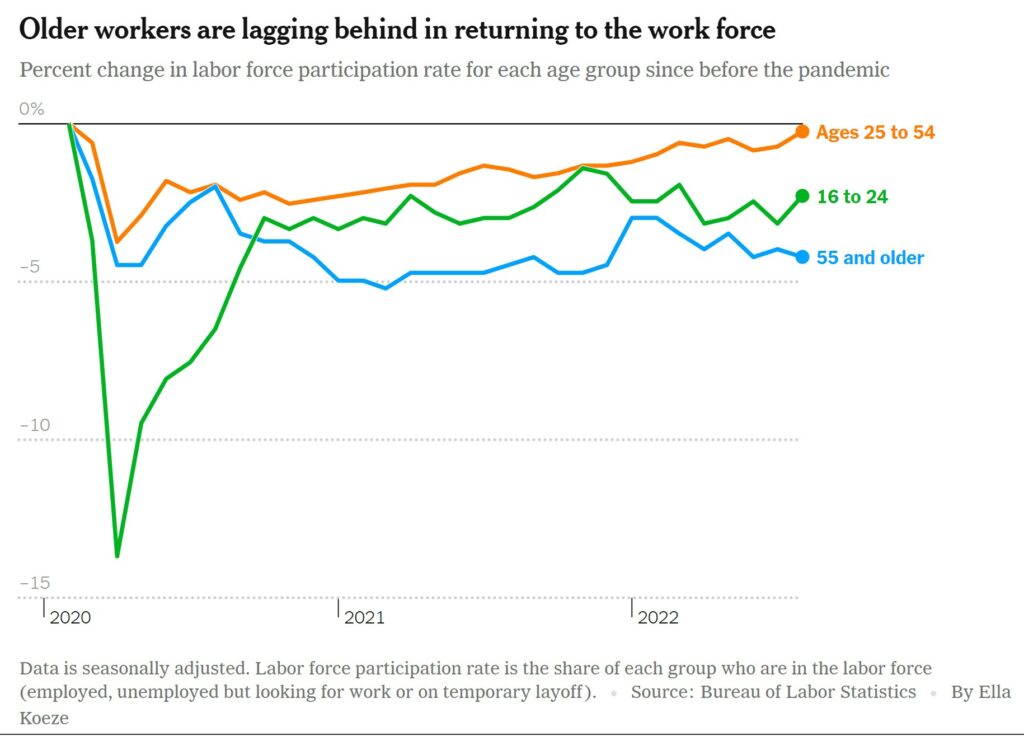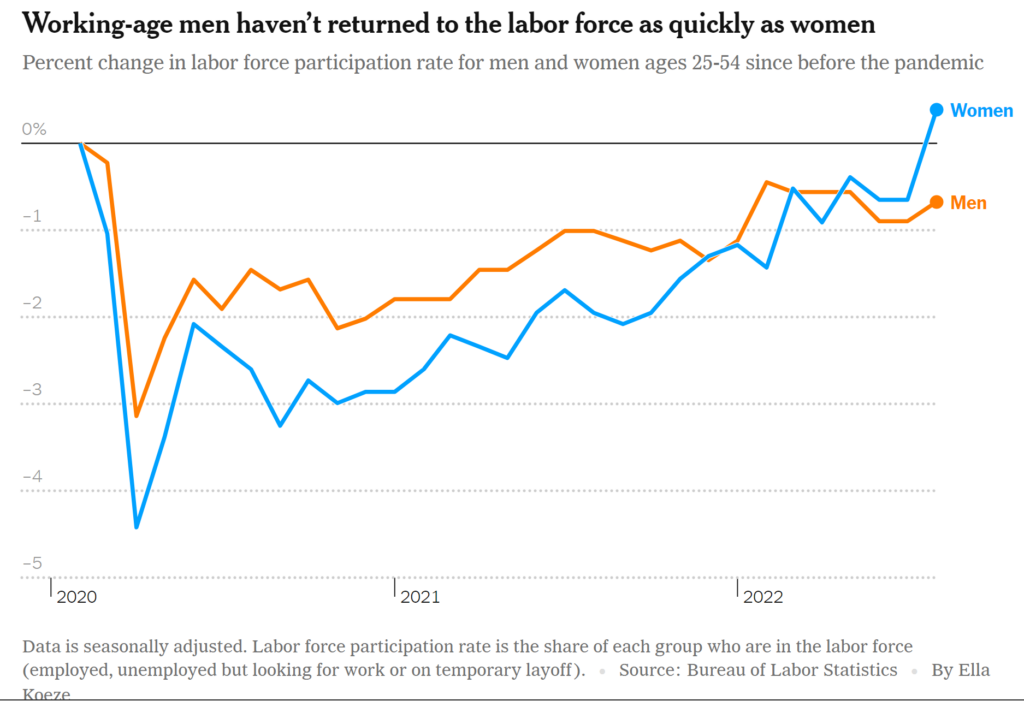Before you start chattering at me about this and that detail, let’s get an understanding. I am supply chain and manufacturing or manufacturing and supply chain. If there was a job opening in either and with appropriate pay, I was more than likely in. Companies hiring me usually did so because they had a problem. When I solved it in a couple of years, I was also expendable after 2 more years. Usually a recession would roll around, the company was sold, or it changed direction necessitating a cut in the Labor Force. Even then, I kept them profitable according to one Division Controller (Bill Dold) who asked how I was producing the results during the early eighties. This article is intriguing (at least to me) and it is fairly recent concerning
Topics:
run75441 considers the following as important: Hot Topics, labor, pandemic, Supply Chaim, US EConomics, US/Global Economics
This could be interesting, too:
NewDealdemocrat writes JOLTS revisions from Yesterday’s Report
Joel Eissenberg writes No Invading Allies Act
Bill Haskell writes The North American Automobile Industry Waits for Trump and the Gov. to Act
Bill Haskell writes Families Struggle Paying for Child Care While Working
Before you start chattering at me about this and that detail, let’s get an understanding. I am supply chain and manufacturing or manufacturing and supply chain. If there was a job opening in either and with appropriate pay, I was more than likely in.
Companies hiring me usually did so because they had a problem. When I solved it in a couple of years, I was also expendable after 2 more years. Usually a recession would roll around, the company was sold, or it changed direction necessitating a cut in the Labor Force. Even then, I kept them profitable according to one Division Controller (Bill Dold) who asked how I was producing the results during the early eighties.
This article is intriguing (at least to me) and it is fairly recent concerning the Labor Force.
“Who Are America’s Missing Workers?” The New York Times, Lydia DePillis
There are two reasons employers have been so desperate to hire workers as the United States emerges from the pandemic. The first being; Demand for goods and services rebounded. The second: A bunch of former workers never showed up or returned to take the resulting jobs. I am going to offer up another need; “workers and management who still understand manufacturing and assembly. Much of this knowledge has died when Asia took over.
Time has passed since the Covid-19 recession officially ended. Labor supply is holding back the economy. Some sectors have not found enough workers to operate at capacity. In August the work force returned to its pre-pandemic size. Industry still lacks the millions needed to grow at its pre-pandemic rate. Some of the gap is due to Covid’s death toll of more than a million people. Approximately 260,000 of them were short of retirement age. Additionally, a sharp slowdown in immigration has also pared the potential work force by 3.2 million relative to its pre-2017 trajectory.
The problem is not just a stalled population growth. With an uptick in August, Participation Rate, the share of Americans working or actively looking for work is 62.4 percent. Down 1% from a Participation Rate of 63.4 percent in February 2020. Wendy Edelberg, director of the Hamilton Project:
“It’s my sense that the most important reason that the labor market feels so hot right now is that we have so many fewer people in it. “Demand largely recovered, and we didn’t have the supply (labor).”
Men in their prime working years, from 25 to 54, have retreated from the work force relative to February 2020. Women have bounced back. Magnifying those disparities are two factors: the long-term health issues associated with Covid-19, and a lagging return for workers without college degrees.
Older workers are lagging behind in returning to the work force
As you look at the graph above, you can see older workers 55 and older have not returned to the same level experienced in 2020. People at or past retirement age, who were staying in the work force longer and in great numbers before the pandemic, dropped out at disproportionate rates and haven’t returned. This fits with a scenario of older people leaving the work force during the pandemic resulting is a decreasing labor force.
Fed Chairman Powell whacking a smaller labor force may backfire for business already short of labor. Labor making more money does not appear to be the real issue for inflation. The terminology for Powell might be; “Go Fish” for another reason.
I have not found much fault with the author. The following paragraph puzzles me. “For decades, a large generation aging into retirement has been the strongest factor dragging down overall labor force participation. The pandemic, which made workplaces particularly dangerous for older people, supercharged the trend. At the same time, the value of homes and 401(k) accounts ballooned in 2021, bringing retirement within reach for many.”
Not sure their working to an older age drags down PR. If anything, it may slow down advancement. This should not depend upon someone retiring. The decrease is more a factor of jobs moving overseas and throughput efficiency. PR used to be bobbing around 67%. Population has not shrunk either.
One more chart and I am done.
Men have not returned to the Labor Force
Women outpacing men in earning college degrees in recent years can be a factor. Labor Force Participation by college graduates has recovered since the pandemic shutdowns. For those with less education, it has not. Also in households where both partners lack college diplomas, women still tend to be the ones who drop out to supplement unreliable childcare. In households where a woman has a degree, they have become the primary or sole breadwinner.
The trend can be the continuation of a longer-term decline in male labor force participation beginning in the sixties. Manufacturing throughput has been automated. It has also moved to other countries to avoid US Labor Overhead. A barrier disproportionately affecting men is the impact of a criminal record: By age 35, forty-six percent of unemployed men have a criminal conviction, according to a recent study in Science Advances.
This is it for now. More later.
~~~~~~~~
“Who are the 1 million missing workers that could solve America’s labor shortages?” (brookings.edu), Dany Bahar and Pedro Casas-Alatriste.
“How will the world pay to support its aging population?” (qz.com), Samanth Subramanian and Clarisa Diaz


